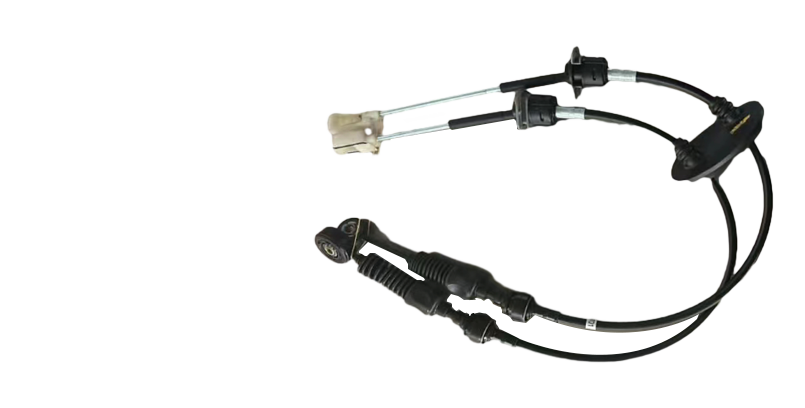Choosing the Right Shift Selector Cable for Optimal Vehicle Performance
Understanding Shift Selector Cable The Unsung Hero of Your Vehicle's Transmission System
The shift selector cable is a critical component in modern vehicles that often goes unnoticed by the average driver. It plays an indispensable role in the smooth operation of the transmission system, providing a vital link between the gear shifter and the transmission itself. Understanding its functions, importance, and the potential issues that can arise with it can aid in better vehicle maintenance and performance.
What is a Shift Selector Cable?
The shift selector cable is a flexible, metal or plastic cable that connects the gear shifter located in the vehicle's cabin to the transmission system. When a driver moves the gear shifter, the cable transmits that movement to the transmission, allowing the vehicle to change gears seamlessly. In automatic vehicles, the shift selector cable ensures that the correct gears are engaged depending on the driver's input and the vehicle's speed.
The design of this component can vary based on the make and model of the vehicle, but the essential function remains the same. It is engineered to withstand complex movements while maintaining a high level of durability and flexibility. A properly functioning shift selector cable is crucial for maintaining vehicle performance and safety.
Importance of the Shift Selector Cable
While often overshadowed by more well-known transmission components such as the clutch and torque converter, the shift selector cable is equally important. It directly influences how responsive and smooth the vehicle feels when changing gears. A malfunctioning cable can lead to a number of performance issues, including delayed shifting, difficulty in changing gears, or even a complete inability to shift.
Moreover, a damaged or frayed cable can pose significant safety risks. If the cable snaps while driving, it may prevent the driver from changing gears, potentially leading to hazardous situations. Ensuring that this component is well-maintained can help prevent such incidents and enhance the overall driving experience.
Signs of Shift Selector Cable Problems
Like any mechanical component, the shift selector cable is subject to wear and tear over time. Recognizing the symptoms of a failing cable can help drivers address issues before they escalate. Common indicators include
1. Difficulty Shifting Gears If the driver encounters resistance when trying to shift gears, or if the gear shifter feels loose or disconnected, it could signal a problem with the cable.
shift selector cable

2. Unwanted Gear Changes If the vehicle unexpectedly changes gears or cannot be shifted into the desired gear, it may be due to a malfunctioning selector cable.
3. Cable Fraying or Damage Visual inspection of the cable can reveal fraying, kinks, or other types of damage. If these signs are observed, it is advisable to replace the cable promptly.
4. Check Engine Light In some vehicles, issues with the transmission—including the shift selector cable—might trigger the check engine light. A diagnostic check can reveal whether the cable is at fault.
Maintaining the Shift Selector Cable
Regular maintenance is key to prolonging the life of the shift selector cable. Drivers should consider the following practices
- Routine Inspections Regularly check the cable for any signs of wear or damage. Catching problems early can prevent more significant issues down the road.
- Proper Lubrication Ensure that the cable is appropriately lubricated to reduce friction and wear. Consult a vehicle’s service manual for the recommended lubrication schedule.
- Professional Assistance If any issues are suspected, it is prudent to consult a qualified mechanic. Professionals have the tools and knowledge to diagnose and repair shifting problems effectively.
Conclusion
The shift selector cable may not receive the attention it deserves, but its importance cannot be overstated. This small yet essential part is crucial for the proper functioning of a vehicle's transmission system. By understanding its role, recognizing the signs of wear, and committing to routine maintenance, drivers can ensure a safer and more enjoyable driving experience. Ultimately, paying attention to this unsung hero of the transmission system can lead to better vehicle performance and longevity.
-
Upgrade Your Vehicle with High-Quality Handbrake CablesNewsNov.01,2024
-
Optimize Your Bike's Performance with Quality CablesNewsNov.01,2024
-
Enhance Your Vehicle's Performance with Quality Clutch ComponentsNewsNov.01,2024
-
Elevate Your Vehicle's Performance with Quality Throttle CablesNewsNov.01,2024
-
Elevate Your Vehicle's Performance with Quality CablesNewsNov.01,2024
-
Affordable Solutions for Your Cable NeedsNewsNov.01,2024
